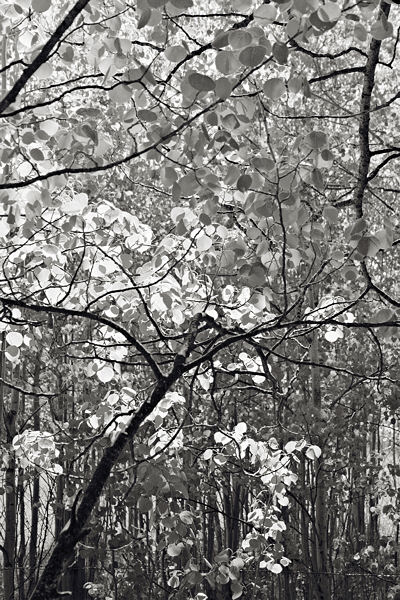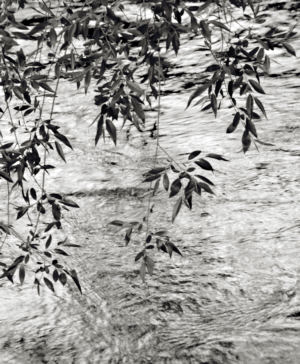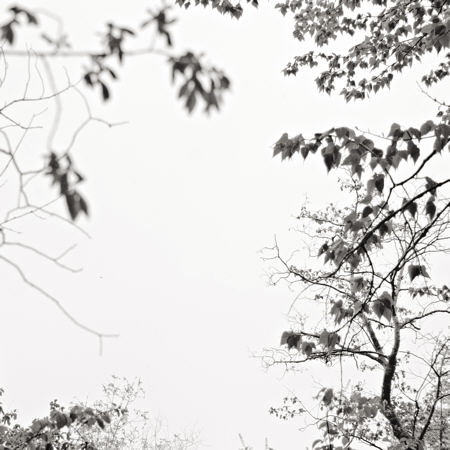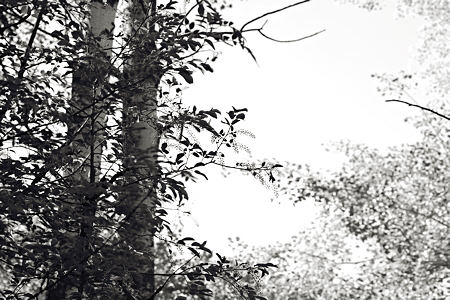Revolutionary airs
June 24, 2008
The weather has changed since last week, and snow (at this elevation) is hard to imagine today. I used to think the solstice was rather late to define the start of summer. This year, here, it seems about right.

In the serendipitous way of things, recent readings have rekindled a long-standing flirtation with Japanese aesthetics. Naturally, I’m interested in applying some of the new and old concepts in my photography. It’s mostly a matter of paying attention to things I haven’t necessarily been thinking about. I am hoping that the Sourdough Trail project can provide a good testing ground for trying out such ideas. There is a body of prior work that may be reviewed and analyzed, and which also serves as a sort of baseline for comparison with new, experimental efforts.
But how does artistic experimentation fit into my mission of exploring place as well as picture-making?

How one looks and what one sees reflect personal concerns. If Sourdough Creek were running past my home or watering stock on my ranch, I’d certainly view it differently. I would know different things about it, and would relate differently to the things I know now. Similarly, if I view it from a different aesthetic perspective, I will learn about and care about it in different ways. I’m sure that my aesthetic exploration will extend and deepen, not dilute, my appreciation of this place.
I wonder whether I’m truly engaging a new approach, or simply rediscovering what’s been there all along. Most likely the end result will be only a natural, incremental step in the evolution of what I do. But it feels like a perceptual shift, and it’s fun to pretend that it will revolutionize everything.

What does the revolution look like? A key aspect at first is flipping terms to see not so much trees and leaves as the spaces between. I want to learn to develop this negative space in my compositions. There are many questions. What can be expressed with emptiness? How does it depend on scale? Does the space between leaves work like the space between trees? I’ll be seeing what I can find out.

This idea of focusing on the space, makes me think about the verse in the Tao Te Ching [from a translation for the public domain by j.h.mcdonald, 1996] :
“Thirty spokes are joined together in a wheel,
but it is the center hole
that allows the wheel to function.
We mold clay into a pot,
but it is the emptiness inside
that makes the vessel useful.
We fashion wood for a house,
but it is the emptiness inside
that makes it livable.
We work with the substantial,
but the emptiness is what we use. ”
So it’s not really emptiness, is it? It’s a kind of matrix of potential, described or circumscribed or in some way realized by something tangible.
What’s different is that we know the function of empty space in a wheel, a pot, a house, but we may have trouble with the meaning of a pictorial emptiness. I suspect a more successful picture would supply not only Useful Space like Pooh’s pot, but also something to put in it, at least a damp rag of a suggestion that the viewer might elaborate. For example, in the sky gap, a faint trace of evaporating clouds might suggest thoughts of transience that could extend to the leaves and beyond. Perhaps a facile and trite-sounding idea, but one I’ll probably try when opportunity presents. As Arlo Guthrie says, I’m not proud–or tired.
As I’m sure you know from your various reading, “transience” is an important part of some Japanese art — both as content in the image and as an idea deliberated evoked by the content. The value of lives and living is always a worthwhile meditation.
There may come a time in the unfolding of this work when you would do well to let go of the fear of being sentimental and just give in to it. Sometimes, after you’ve had a good wallow and truly have exhausted all the cliches, you stumble into genuine sentiment and the perfect, authentic, singular, idiosyncratic expression of it.
The first image is incredible. What comes to mind is Brennpunkt. The light focuses attention roughly into the middle of the image. We talked about placements on A&P recently.